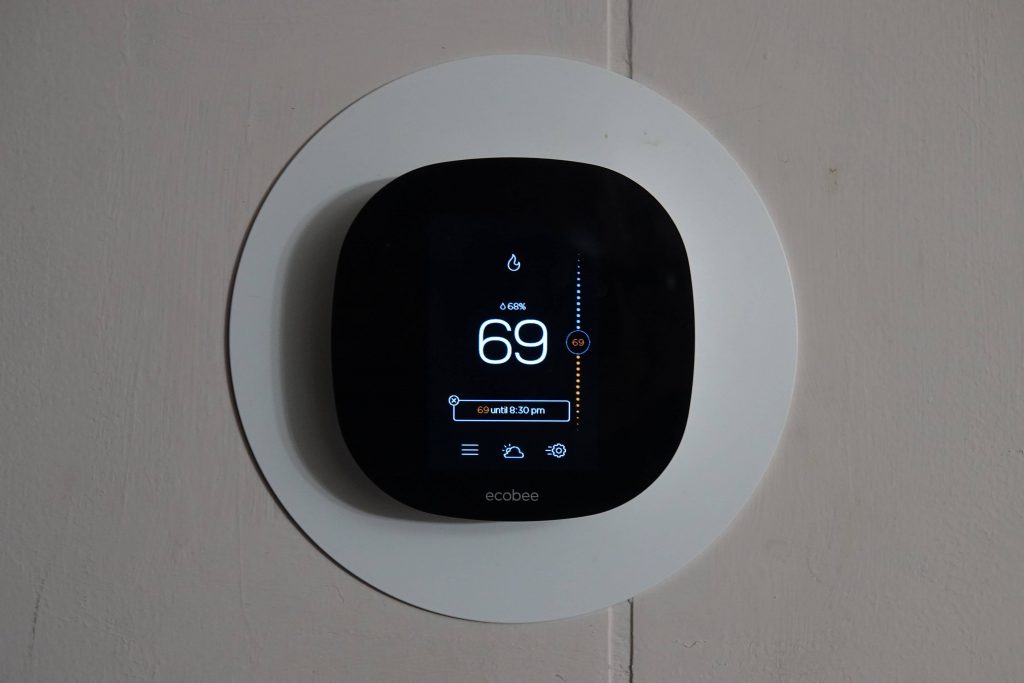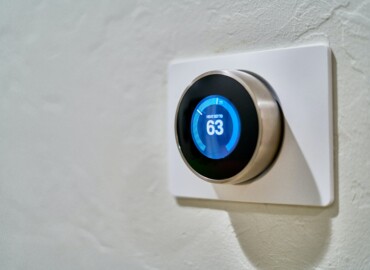Recommended Thermostat Settings For Winter in Canada
As the temperature drops and winter approaches, finding the perfect thermostat setting becomes a priority for homeowners. While there is no one-size-fits-all answer to this question, we can provide some general guidelines to help you strike the right balance between comfort and energy efficiency.
In this comprehensive guide, we will explore the factors to consider when setting your thermostat, share the recommended temperature ranges, and provide tips to stay warm without breaking the bank.
Recommended Thermostat Settings Canada
The recommended temperature for a house in winter is between 68°F to 72°F (20°C to 22°C). This temperature range is considered comfortable for most people and can help maintain energy efficiency.
While personal preferences vary, here are some general recommendations for thermostat temperature settings during winter:
Daytime Recommended Temperature Setting for Canadian Winter
If someone is at home during the day, a good starting point is 72°F (22°C). However, aiming for a slightly lower temperature of 68°F (20°C) can help save on energy costs while still keeping your home cozy.
Nighttime or Away Recommended Temperature Setting for Canadian Winter
When everyone is away from home during the day or asleep at night, a temperature range of 66°F (19°C) to 62°F (17°C) is advisable. Lowering the temperature during these periods can result in significant energy savings.
Remember, these temperature ranges are not set in stone. Adjust the settings based on your comfort level and the factors mentioned earlier.
Factors That Can Affect The Ideal Thermostat Temperature for Winter
Several factors can affect the ideal thermostat temperature for winter, such as:
- The Climate in Your Area
- The Age of Your Home
- Your Home Insulation
- Personal Preferences
For instance, if you live in an extremely cold climate, you may need to set your thermostat at a higher temperature to maintain a comfortable environment. Similarly, if your home is poorly insulated, you may need to set your thermostat at a higher temperature to compensate for the heat loss.
How to Find The Best Temperature For Your Heater in Winter
Finding the best temperature for your heater in winter requires some experimentation. Start by setting your thermostat at 68°F (20°C) and gradually adjust it until you find the ideal temperature that suits your comfort level. Keep in mind that you may have to adjust the temperature depending on the time of day and outdoor temperature. For instance, you may need to set your thermostat at a higher temperature during the day when you are active and lower it at night when you are sleeping.
Tips for maintaining optimal comfort and energy efficiency in your home during winter
Maintaining optimal comfort and energy efficiency in your home during winter requires a few simple tips. Firstly, ensure your home is properly insulated to reduce heat loss. Secondly, use a programmable thermostat to set different temperatures for different times of the day. This can help save energy and money. Thirdly, dress appropriately for the weather to reduce the need for high thermostat temperatures.
Best Practices for Setting Your Thermostat in Winter to Save Money
To maximize energy savings without sacrificing comfort, consider easing into the winter season by gradually decreasing the temperature setting. Start with your desired high temperature and lower it by one degree each week. This incremental change can reduce your energy bill by approximately 1% per eight hours, according to the U.S. Department of Energy. By gradually acclimating to lower temperatures, you won’t even notice the difference.
Optimizing with a Programmable Thermostat
Investing in a programmable thermostat can significantly enhance your energy efficiency efforts. These smart devices allow you to schedule temperature changes based on your daily routines and occupancy patterns. By programming lower temperatures when you’re away or asleep, you can save even more on your heating bill. Plus, with smartphone apps, adjusting the thermostat remotely becomes a breeze.
Common Thermostat Mistakes To Avoid in Winter
Avoid setting your thermostat at a high temperature to heat your home quickly. This can result in overheating and high energy bills. Secondly, avoid turning off your heating system completely when you leave your home. This can cause your pipes to freeze and result in costly repairs. Lastly, avoid placing your thermostat in areas that are affected by direct sunlight, drafts, or heat sources.
Conclusion
Finding the ideal thermostat temperature for winter is crucial for maintaining a comfortable living environment and saving energy bills. The best temperature for a house in winter is between 68°F to 72°F (20°C to 22°C), but it can vary depending on several factors such as climate, insulation, and personal preferences. Using a programmable thermostat, dressing appropriately, and avoiding common thermostat mistakes can help maintain optimal comfort and energy efficiency. By following these tips, you can enjoy a comfortable winter season while also saving money on heating bills.
FAQ
Ideal Thermostat Temperature Setting for Winter?
The ideal temperature setting for a thermostat during winter is typically between 68°F and 72°F (20°C to 22°C) when you're at home, and around 60°F to 65°F (15°C to 18°C) when you're away or sleeping.
Is it recommended to lower the temperature when sleeping or away from home?
Lowering the temperature when sleeping or away from home can help reduce energy consumption and save on heating costs. It's also more comfortable to sleep in a slightly cooler room, and you won't be wasting energy heating an empty house.
How often should I adjust my thermostat temperature during the winter?
It's recommended to set your thermostat at a consistent temperature during the winter months to ensure consistent comfort and energy efficiency. You may need to adjust the temperature if there are significant changes in the weather or if you have a large gathering of people in your home.
Should I use a programmable thermostat to manage my winter heating?
Yes, a programmable thermostat can be an effective way to manage your winter heating, especially if you have a consistent daily routine. You can program your thermostat to automatically lower the temperature when you're away or sleeping, and then raise it again when you're back home.
What other steps can I take to stay warm during winter while keeping my energy costs down?
In addition to setting your thermostat to the ideal temperature, you can also take steps such as sealing air leaks, adding insulation to your home, using draft stoppers on doors, and wearing warm clothing to stay comfortable.





